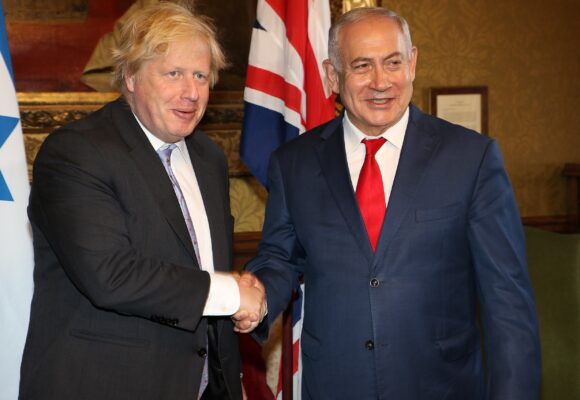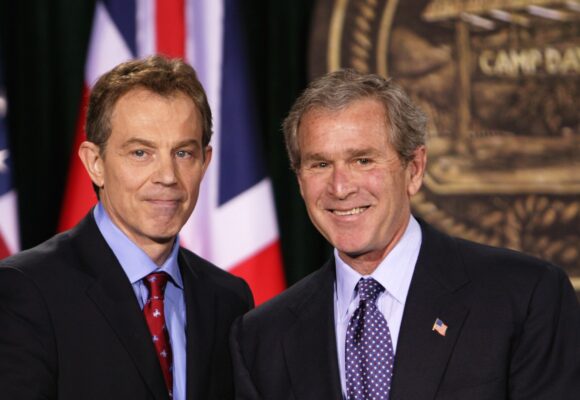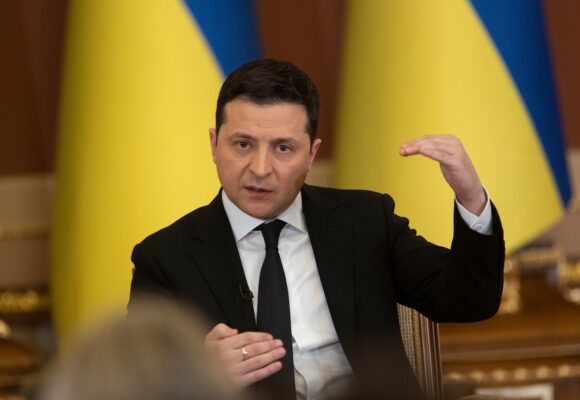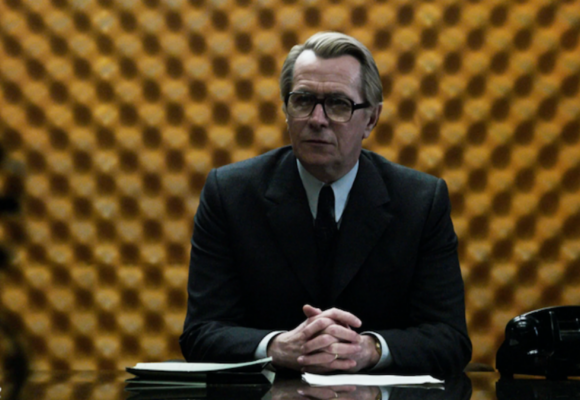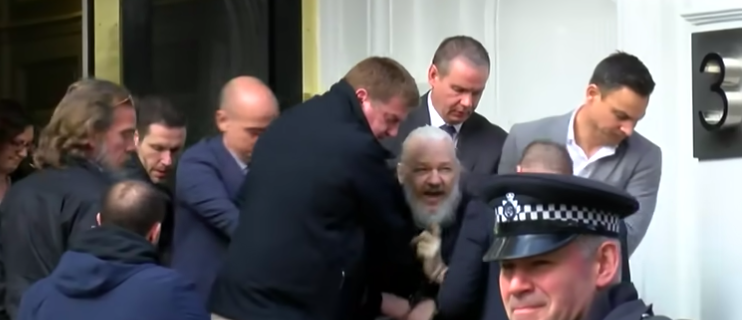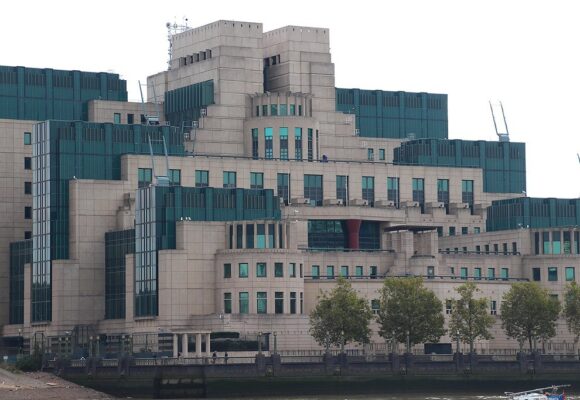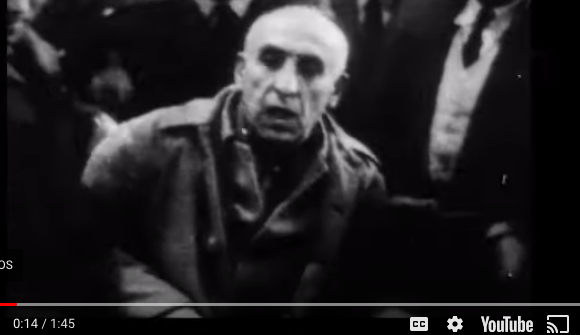HAPPENING NOW:
Inside the Discord Leak: U.S. Air Force Loves War Gamers Like Teixeira
British Intelligence Privately Says Israel Has Nuclear Weapons But Won’t Admit it Publicly
Mexican President Accuses Pentagon of Spying, Vows to Restrict Military Information
Daniel Ellsberg Week Honors Pentagon Whistleblower
How Twitter Became a Propaganda Tool of U.S. Central Command
Interview With the Father of a Palestinian Fighter Assassinated by Israeli Special Forces
Chinese Police Station in New York Is Part of a Vast Influence Operation
Catch-22 at Guantanamo, or How Due Process Got Undone
Wagner Group Leader Calls for End to Russia’s ‘Special Military Operation’
Once Ridiculed, the ‘October Surprise’ Deal Between Reagan and Iran Is Now Confirmed
Two Senators Allege ‘Secret’ CIA spying on Unwitting Americans
UK Spy Agency Says AI Chatbots Pose a Security Threat
How Aerial Surveillance Has Evolved Over the Past 200 Years
Wagner Mercenary Chief Says He Ran Russian Information War
Iranians Outraged After Shah-Era Secret-Police Official Attends U.S. Rally
Israeli-led Disinformation Team Meddled in Dozens of Elections
Director of National Intelligence Barred From Reporting on Domestic Extremists in U.S. Armed Forces
Iranian Intelligence Official Says China in Line to Buy Tehran’s Drones
Former Mossad Chief Urges Compromise on Judicial Shakeup
United Kingdom: Secret Intelligence Service (MI6)
World’s Oldest
The Secret Intelligence Service of the United Kingdom is the world’s oldest spy agency. Created in 1909, the agency was tasked with defending the secrets of Her Majesty’s government in London. But as guardian of the British empire, SIS came to have an outsized influence on the world, both politically and culturally. The two archetypal spies of the 20th century literature, the dashing James Bond and the disillusioned George Smiley, both issued from the British imagination.
Origins
 The SIS original mission was to defend the Crown and Britain’s colonial empire, stretching from Jamaica and Trinidad in the West, to Palestine and Iraq in the Middle East, to India and Hong Kong in the Far East.
The SIS original mission was to defend the Crown and Britain’s colonial empire, stretching from Jamaica and Trinidad in the West, to Palestine and Iraq in the Middle East, to India and Hong Kong in the Far East.
The organization grew during World War. After the war, SIS was split into sections and the branch known as “Military Intelligence 6,” or MI6. It became the world’s first intelligence service dedicated solely to operating in foreign countries. The British experience of subduing, controlling and manipulating native populations shaped the evolution of MI6 and other Western intelligence services.
When the Bolshevik communists took power in Russia in 1917, the SIS immediately sought to undermine and overthrow the new government in Moscow. With a large contingent of Russian speakers, MI6 recruited allies among exiles and monarchist forces routed by the Bolsheviks. MI6 also had effective control of a half dozen allied intelligence services in Europe. Around the world, British government relied on MI6 to identify and disrupt anti-colonial movements, such as the African National Congress in South Africa. Thwarting popular movements that sought national independence and redistribution of wealth was central to the identity of MI6. MI6 was the instrument of empire.
As Nazi Germany sought to dominate Europe, MI6 led the British resistance. The so-called Special Operations Executive, run by MI6’s domestic partner MI5, was tasked with espionage and sabotage in German-controlled territory. The British also introduced the Americans to secret intelligence work, training the Americans serving in the U.S. Office of Strategic Services. But the biggest MI6 coup of the war came from an office known as the Government Code and Cypher School, which succeeded in breaking the code to Germany’s military communications. With the ability to read the Nazis’ private messages, MI6 was able to deceive the Germans in ways that insured the success of the 1944 invasion Normandy and hastened the Allied victory.
The Five Eyes
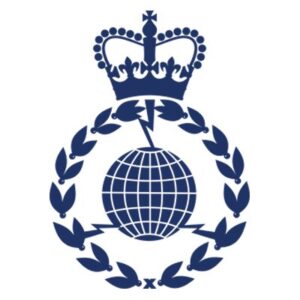
After the war, the British code breakers gathered in a new agency, the General Communications Headquarters (GCHQ). With a robust global telephone and telegraph systems, GCHQ allied itself with America’s new National Security Agency. The British had the hardware and the experience, the Americans had money and ambition. Together with Australian, Canada and New Zealand, they forged the alliance of English-speaking signals intelligence agency known as the Five Eyes.
While its existence was kept utterly secret for three decades, the Five Eyes soon became the world largest intelligence collection enterprise with listening posts on every continent. The Five Eyes provided MI6 with a powerful surveillance mechanism to keep tabs on enemies and friends, the world over.
America’s Junior Partner
Victory in World War II proved costly for MI6. The war against fascism emboldened independence movements challenging British colonial rule in India, Palestine, and Africa. Bankrupted by the war, the British had to let go of the colonies that had once fed their exchequer. In Iran, the British fought back, deposing (with CIA help) the government of Mohammed Mossadegh in 1953 because he sought to triple the royalties paid by the Anglo-Iranian Oil Company. In Egypt MI6 unsuccessfully plotted the overthrow of nationalist president Gamel Abdel Nasser. When the Anglo-French-Israel invasion of Egypt was scuttled by U.S. president Dwight Eisenhower in 1956, Great Britain became a junior partner to the United States and MI6 became the junior partner to the CIA in the Anglo-American intelligence alliance.
By 1963, MI6 was haunted by a well-founded fear of communist penetration. First, Kim Philby, a senior MI6 operative from 1940 to 1951, had been exposed as a longtime Soviet spy. Then the press discovered that foreign minister John Profumo had a girlfriend who also dated a Soviet military attache. In response, MI6 launched a “mole hunt” to find communist spies in its ranks. By the early 1970s, some top MI6 officers thought leftist Prime Minister Harold Wilson might be a Soviet agent. He wasn’t. The insular culture of British intelligence had distorted its analysis and diminished its credibility.
Bond & Smiley

In the later 1950s, former MI6 officer Ian Fleming launched a series of spy novels starring a British intelligence agent named James Bond. With his gadgets and girls, Bond inevitably prevailed over his diabolical, often swarthy, foes. Bond embodied a fantasy of male power that proved irresistible to the English-speaking world. Fleming’s books became best-sellers and a Hollywood franchise. In the latest Bond movie, 007 is a Jamaican woman.
As British power continued to shrink in the 1970s, another veteran of British intelligence, John LeCarre, began publishing a different kind of spy novel. LeCarre’s anti-hero was George Smiley, a dowdy cuckolded counterintelligence specialist, who dueled with Soviet intelligence in a world where tedium and treachery were the norm and moral victories scarce. With their more realistic and complex depiction of “The Circus,” a reference to MI6, Le Carre’s books also became best-sellers and screen attractions.
Lashana Lynch becomes 007 in the next
James Bond film.
‘Dodgy Dossier’
When U.S. President George W. Bush decided in 2002 that the United States had to invade Iraq and destroy Saddam Hussein’s alleged weapons of mass destruction, he found ready allies in London. Prime Minister Tony Blair and MI6 chief Richard Dearlove endorsed the notion that Hussein had a secret store of WMD that posed an imminent threat to the West. When no WMD were found after the invasion, a parliamentary investigation blamed Dearlove for passing on bogus information and failing to correct Blair’s embellishment of the so-called “dodgy dossier.”
Another parliamentary investigation found that MI6 had collaborated in the CIA’s programs and rendition and torture. But the U.K.’s strict Official Secrets Act made it difficult for the press report the details, and MI6’s freedom of action was not curbed by legislation or legal action.

In response to the United Kingdom’s leading role in the invasion of Iraq, Islamist terrorists targeted British civilians for deadly attacks, The MI6 and its domestic counterpart MI5 responded with a comprehensive counterterrorism program both to infiltrate and educate the expatriate Muslim communities. The could not able to prevent deadly attack on London’s public transport in 2007 and a pop music concert in 2017.
The historical enmity of British and Russian intelligence services returned in the 21st century. MI6 has repeatedly accused Russia of assassinating or attempting to assassinate Russian intelligence officers who had taken refuge in Britain. The investigation of these incidents showed that GRU and FSB were able operate freely in London. The MI6 also assess that Russia provided significant support for far-right nationalist forces behind the successful Brexit campaign. As the terrorist threat faded, MI6 claimed the threat of Russia was re-emerging.
Alex Younger has served the chief of the Secret Intelligence Service since 2014.
Resources
- History of SIS (according to SIS)
- James Bond and British Intelligence (The Conversation).
- Comments/Corrections/Leaks About MI6


